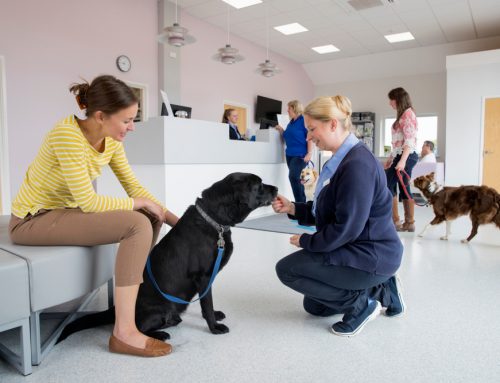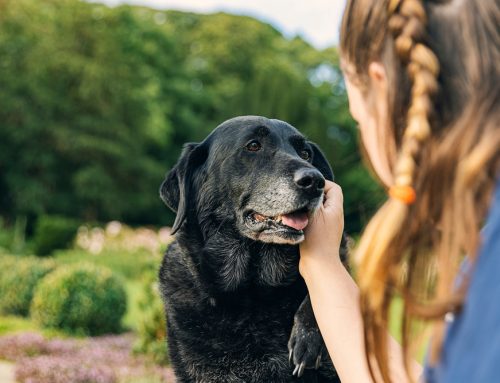Arthritis management is best approached comprehensively, by managing pain, preventing further degeneration of joints, maintaining muscle mass, and assuring a pet’s body weight is not making matters worse. Here are the key elements to consider…
- Weight loss. As arthritis develops and joints began to hurt, a dog may become became less able to exercise or tolerate long walks. Less exercise would lead to weight gain if a dog’s diet were not modified accordingly. Carrying additional weight is additional strain on joints, and an arthritic dog needs to keep moving in order to maintain muscle mass. But how can they if they’re in pain? This brings us to the need for joint support & pain control.
- Joint support. Supplements such as glucosamine and fish oil (and some you probably haven’t heard of, called PSGAG and Type II Collagen) are often given to help sustain the formation of molecules in joint fluid that cushion the joints, and promote an overall anti-inflammatory state in the animal. It is ideal to start giving these supplements before clinical signs of arthritis develop, in order to protect the joints from becoming damaged in the first place. There are also a few options for prescription diets that incorporate joint support supplements (and can potentially help with weight loss as well).
- Pain control. Depending on how severe a dog’s arthritis pain is, a joint supplement alone may be adequate, or it may be necessary to provide pain medication. Hesitant to start a drug? Anti-inflammatory medications designed specifically for use in dogs are safer and more effective than human medications like aspirin. When they are given with food, stomach upset is less likely to occur. It is ideal to do bloodwork prior to starting medication long-term to be sure the liver and kidneys are healthy enough to metabolize the medication. If a dog does not tolerate a given medication well, many other options are available.
- Alternative therapies. Some dogs may also benefit from alternative or complementary therapies such as acupuncture or cold laser therapy. As arthritis progresses, there may be other ways to accommodate a dog’s changing abilities and needs. Placing a ramp on the stairs or putting carpet runners down on slick floors for improved traction may not strike you as a “treatment” for arthritis, but if it helps your pet get around more easily, it should be a part of your approach.
To download and print this article, please click here.






Leave A Comment